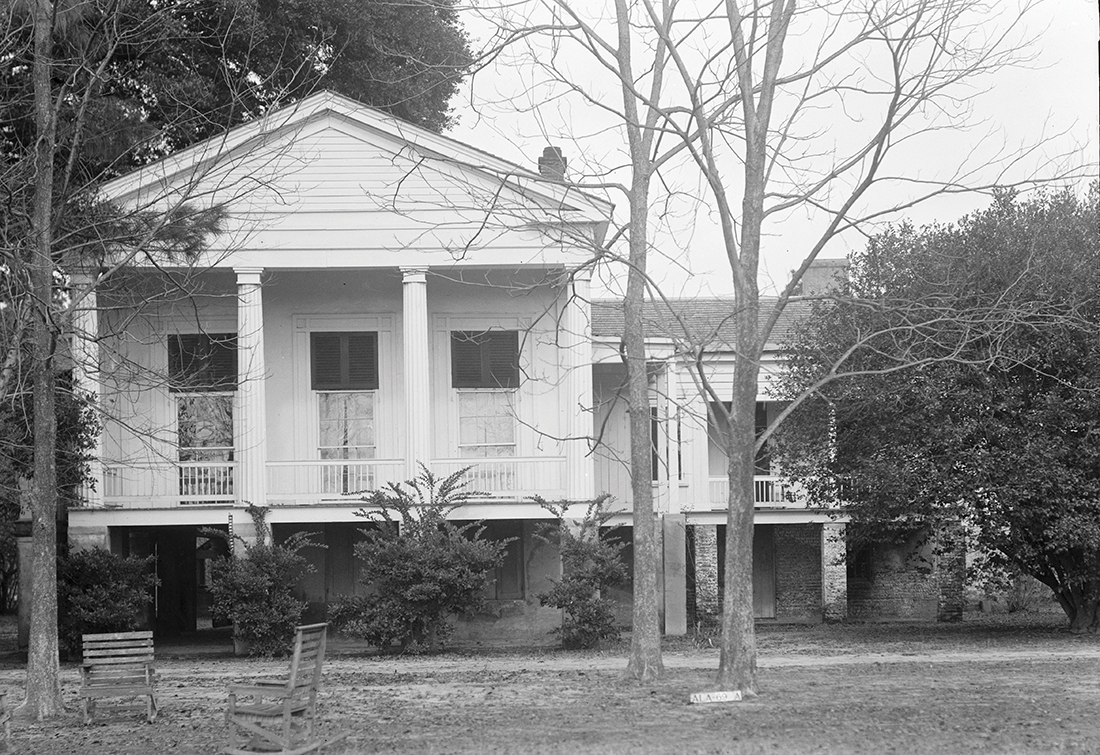
An antebellum home did stand south of Old Shell Road on Mobile Street, but it was simply a suburban estate much like Oakleigh and the Bragg-Mitchell Mansion. The place was dubbed “Briarwood” in 1839 by its builder, Kiah Bayley Sewall.
Sewall was a native of Maine who studied law in Boston before moving to Mobile to set up practice. According to family history, Sewall had health issues and felt a warmer climate would be beneficial. In April 1839, he wrote his wife that he found Mobile’s “roads lined with cottages and fine gardens, the fences covered in Cherokee roses.” He built his own home soon after his arrival, selecting a location in what he described as being “in the country.”
Sewall soon had a successful law practice established with an office on St. Michael Street. His career over the next two decades included handling some high-profile cases in front of both Alabama’s and the U.S. supreme courts.
A Raised Suburban Villa
Architecturally, Briarwood seemed to have borrowed heavily from the design of Oakleigh, which was completed a year earlier. Both are raised cottages fronted by temple-like porticoes. While Oakleigh has a very distinctive curved stairway leading to the front porch, the Sewall home had a straight set of exterior stairs leading to a side door. Also unlike Oakleigh, the house was built with an interior staircase and a kitchen.
According to the 1860 federal census, the Sewall household consisted of Sewall, his wife Lucretia and eight children ranging in age from infancy to 21. Sewall sent his older children to schools in Maine near his in-laws.
Letters back and forth to Maine describe a pleasant summer evening at Briarwood he enjoyed with “all the windows and doors open and everything still except the hum of insects, the distant mill-like sound of frogs and the occasional bark of a dog.”
A later letter contained a very different mood: “I write this in haste. There is great excitement here as the telegram tells us that the batteries opened in Fort Sumter this AM at half past four.” The Civil War had begun.
An Alias and an Escape North
Mobile escaped the early years of the conflict relatively unscathed. Numerous blockade runners kept a flow of supplies coming into the port, but that ended in 1864 when the Federal fleet arrived outside the mouth of Mobile Bay.
According to Sewall family correspondence that summer, food supplies in Mobile were running low due to the blockade and the 55-year-old attorney feared he would be “coerced” into joining a Confederate regiment. In August he obtained a round-trip pass to Tuscaloosa on business and managed to get all the way to Maine using an alias. Apparently Lucretia and some of the younger children remained at Briarwood.
As early as February 1865, Sewall attempted to return to Mobile via New Orleans where he hoped to get provisions for his family members in Mobile. In May, just a week after the surrender, he was allowed to bring a lengthy list of provisions, as well as books and baggage to Mobile.
Later that summer, Sewall headed back to Maine to visit family, but he never made it. He died in Boston on August 19 at the age of 56. Although the Maine Historical Society had copies of wills he wrote in the early 1850s, his estate was put through probate as intestate that October. His “dwelling house between Dauphin Way and Shell Road, all outbuildings and 22 acres of land” were given a value of $6,500.
The family apparently held onto the house until 1872 when it was lost in foreclosure. The South was in a severe financial decline at the time, and Sewall’s widow and children returned to New England. All are buried in Portland, Maine. There are no descendants.
From Farm to School
Briarwood became a farm and the unique architecture of the house caught the attention of the Historic American Buildings Survey in the 1930s. Those photographs indicate the home was in good repair at the time. The last occupant of 53 Mobile Street was Truman McGonigal, a lumber executive who served as local consul for Bolivia and Ecuador in the 1940s.
McGonigal died in December 1948, and city directories list the address as “vacant” in 1949; it is not listed again after that. The exact date of the demolition of this distinctive Gulf Coast home is unclear.
In 1953, the land Sewall had once admired for its peacefulness was obtained as a new location for University Military School. Today, its successor, UMS-Wright Preparatory School, occupies the site.





